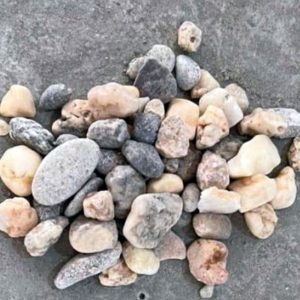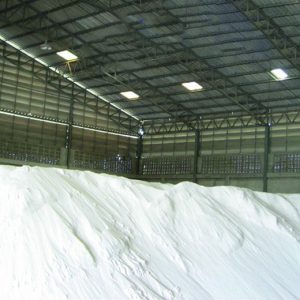White Pumice Stone
White pumice chemical composition
The chemical name of white pumice is amorphous aluminum silicate. It consists mainly of silicon dioxide and aluminum oxide with traces of other oxides as follows:
- Silicon dioxide: 76.2%
- Aluminum oxide: 13.5%
- Ferric oxide: 1.1%
- Ferrous oxide: 0.1%
- Sodium oxide: 1.6%
- Potassium oxide: 1.8%
- Calcium oxide: 0.8%
- Titanium oxide: 0.2%
- Magnesium oxide: 0.05%
Properties
- Natural pumice stone is foamy volcanic rock that forms when lava and water mix together. It usually falls as ash that falls and drifts into sediment or as part of a massive lava flow.
- White pumice is abrasive, absorbent, uncompressed and lightweight.
- Due to the lack of a crystal structure of pumice it is a naturally amorphous calcined glass made up of a labyrinth of air-filled vesicles.
Uses
- Roman engineers combined pumice and fine-grained pumice (pozzolan) with hydrated lime cement to make lightweight and durable concrete. Pumice is still used today as a high-quality pozzolan in concrete.
- The porosity of pumice stone adds insulating value to concrete blocks.
- White pumice is used as a powerful filtration medium with sand (and other filtration media) for municipal and industrial effluent treatment. The low specific gravity and high porosity of pumice stone make it ideal for these applications and water treatment processes.
- The usefulness of pumice stone in filtration processes extends to odor control, soil filtering, and purification of beverages and oils as well.
- Lightweight pumice stone contributes to providing direct solutions to the problems resulting from the heavy weight of buildings, especially in non-hard ground, and pumice stone provides labor savings when handling, lifting and shipping, especially in high-rise buildings for its light weight.
- Pumice stone is safer when earthquakes occur due to its resistance to mechanical vibrations.
- The use of pumice reduces energy consumption by up to 40% through the cooling process inside buildings, as well as reduces the use of gas and the rest of the heating fuel in winter, especially in very cold mountainous areas.
- Pumice stone is also used for industrial cleaning purposes when grounded into powder, such as sanding walls and wood.
- The use of pumice stone in many landscaping and landscaping projects where it is used as a substrate or growth medium in hydroponics, and as a ground cover in the cultivation of gardens and agricultural lands.
- Pumice is used in gardening to improve drainage and soil preparation.
- Pumice stone is used to clean soap residues from ceramic bathtubs, remove mineral deposits from toilets, and is useful for removing dirt from grill grates and inside ovens.
- The use of pumice stone is also useful for removing pills from sweaters and removing pet hair from furniture and carpets.
BMS FACTORIES screens and physically and chemically processes Pozzolan to produce Pumice used in industrial building materials chemicals and water purification materials. Our products conform to the American Water Works Association.
American Water Work Association
ASTM E11 TEST SIEVE & ANSI / AWWA B100/09 Standard
Gharbalah Industrial Company owns more than 14 main products and dozens of sub-products to cover all the needs of factories usings our industrial raw materials and water treatment and purification projects inside and outside the Kingdom of Saudi Arabia.










